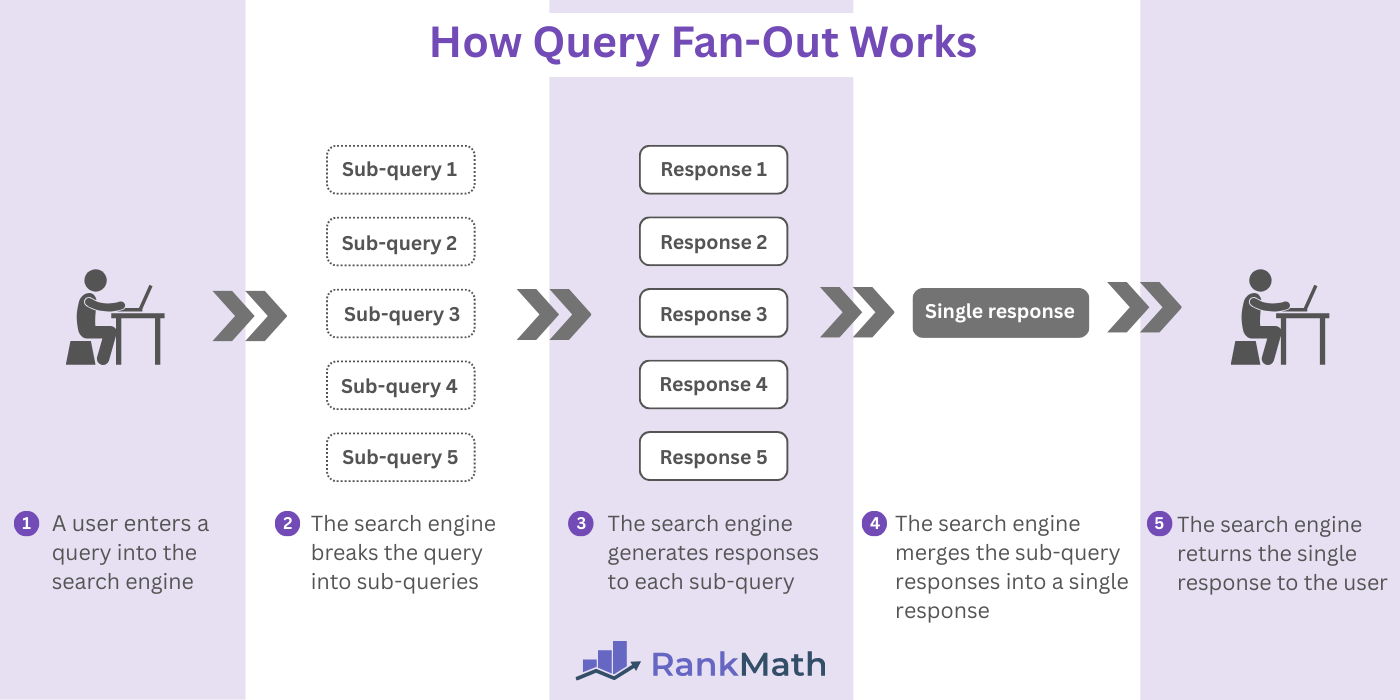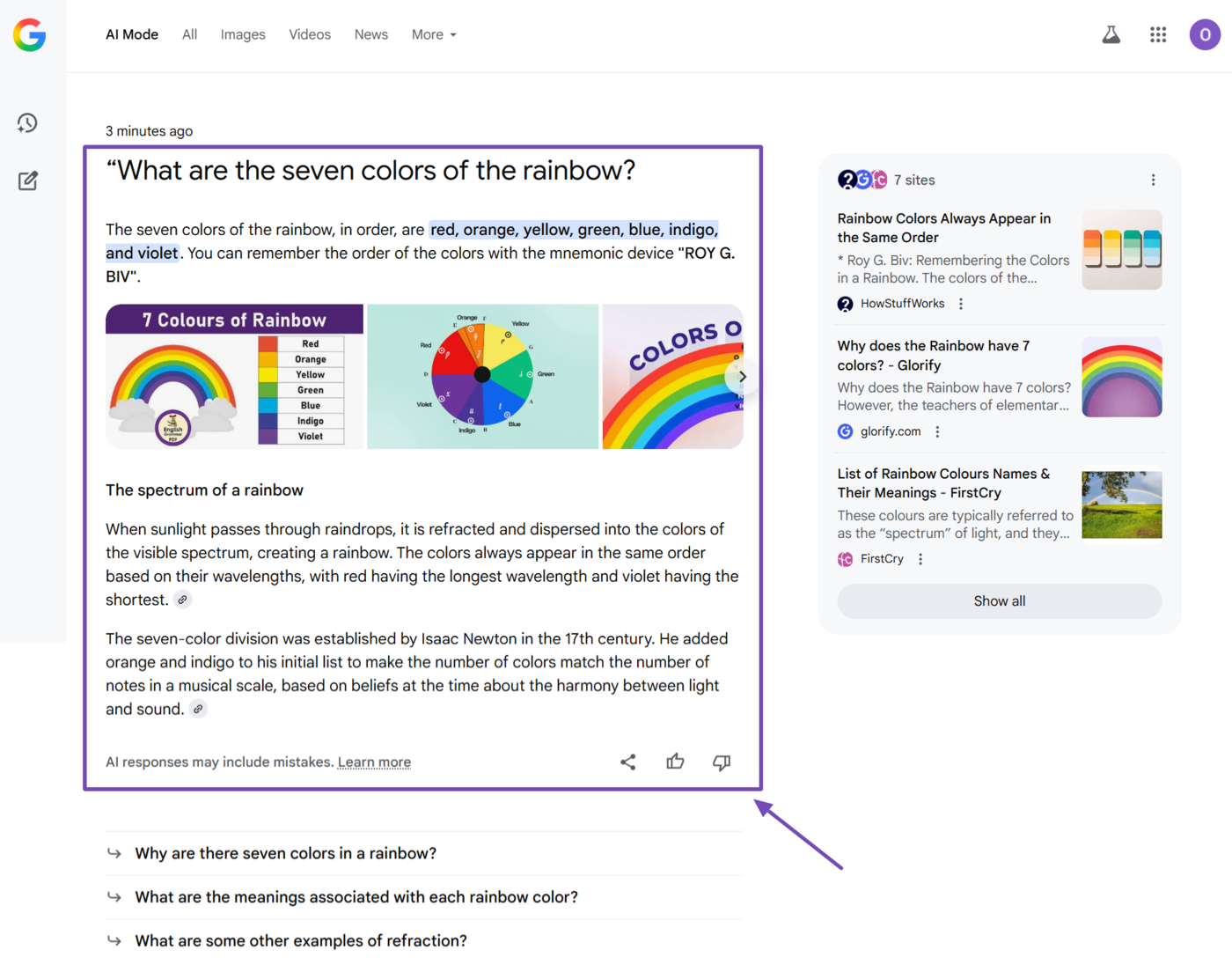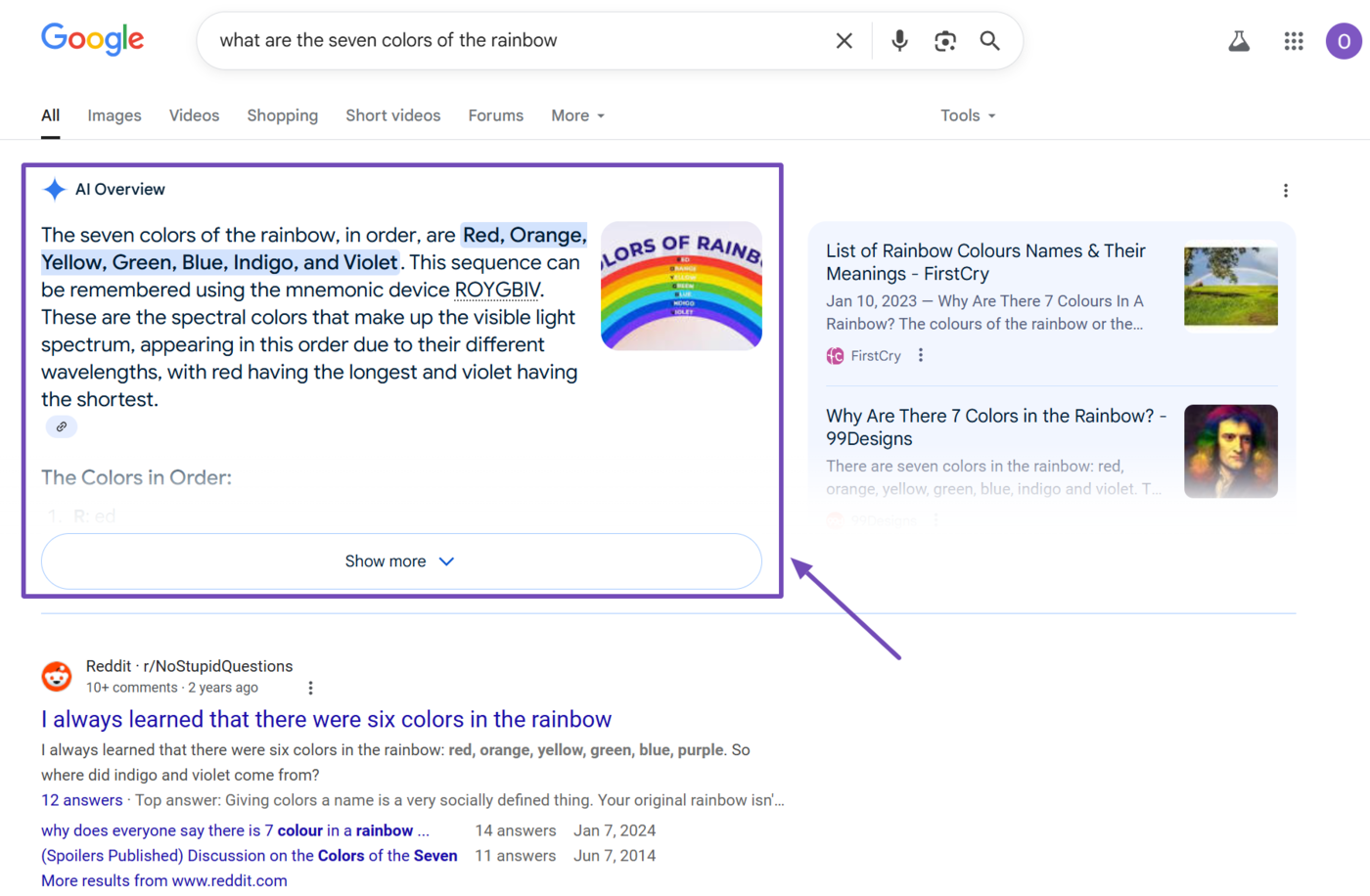What Is Query Fan-Out?
Query fan-out is a technique where a generative AI system breaks a user’s question into multiple smaller, related sub-queries. It then generates responses to these sub-queries and combines them into a single, richer answer for the user.
Query fan-out is commonly used by AI-powered search engines and systems, often referred to as answer engines, such as Perplexity AI and Google AI Mode.
The name “query fan-out” itself was popularized by Google. This means other AI systems and large language models (LLMs) that use the technique may not refer to it as query fan-out, even if that is what it is.
In this article, we’ll cover:
How Query Fan-Out Works
Query fan-out works by breaking a question into multiple smaller, related sub-queries. It then answers these sub-queries and merges their responses into a single response.

For example, if you enter the query “What are the seven colors of the rainbow?” into an AI system that uses query fan-out, the system will break it into multiple related and relevant sub-queries, such as:
- What is the order of rainbow colors?
- What does ROY G. BIV mean?
- How are rainbows created?
- Why are the colors in the rainbow arranged that way?
- Which rainbow color has the longest wavelength?
- Which rainbow color has the shortest wavelength?
- Who named the seven colors in the rainbow?
It then answers these sub-queries and combines their response into a single result.
For example, this is what Google AI Mode, which uses query fan-out, returns for the search term, “What are the seven colors of the rainbow?”

In contrast, when we enter the same query into the regular Google Search, which does not use query fan-out, this is the response it returns:

Importance of Query Fan-Out
Query fan-out enables generative AI systems to deliver more in-depth and helpful results to users.
It works by breaking a query into sub-queries, which are essentially concepts related to the main query. It then generates a relevant response in return.
This ensures the system can provide a comprehensive answer that gives the user multiple and diverse perspectives on the topic.
Beyond this, query fan-out also improves the overall search experience by anticipating what the user might ask next. This allows it to reduce the number of searches that the user would have conducted.
Overall, query fan-out saves time and improves the user experience for visitors. It also turns their search experience into a more intuitive and assistant-like interaction.
Query Fan-Out and the Future of SEO
Query fan-out presents new opportunities and challenges for SEO.
Talking of opportunities, bloggers can structure their content not just around focus keywords, but can extend it to cover related keywords, sub-queries, and frequently asked questions (FAQs).
This increases their chances of being featured on answer engines and chatbots that use query fan-out.
However, query fan-out also comes with its own challenges. For one, it takes traffic away from webpages, as it displays the answer directly on its platform. This means bloggers get less traffic to their site.
This is known as zero-click search, which occurs when visitors do not click on any results on the search results page. In the case of Google, AI Mode (which uses query fan-out) is expected to further contribute to zero-click searches.
How to Optimize for Query Fan-Out
You can optimize for query fan-out by following on-page SEO, off-page SEO, and technical SEO tips and best practices.
If you run a local business, you should also optimize your content for local SEO, as AI systems like Google AI Mode display local businesses in their results.
Additionally, you should also implement some practices unique to query fan-out.
1 Provide Concise Answers to Common Sub-Queries
AI systems can easily understand short and precise answers and generate summaries based on them. So, make sure to keep your sentences short and straight to the point.
Longer explanations can cause confusion, most especially when they are unnecessarily wordy and repeatedly deviate from the topic. AI systems may also overlook them in favor of shorter content that directly conveys the point.
2 Include FAQs That Target Related Questions
Frequently asked questions (FAQs) typically address sub-queries and content related to the topic. This makes them ideal for query fan-out, which, by itself, focuses on addressing these same sub-queries and related concepts.
So, make sure to add a frequently asked questions section in your content. For good measure, you should also include an FAQ Schema to the content.
3 Include Ordered Sequences like Lists and Tables
Ordered sequences, such as lists and tables, neatly organize information in a way that’s easy for search engines and AI systems to understand and parse. Sometimes, these lists and tables are also sub-queries and concepts related to the topic.
It is good practice to include lists, tables, and other ordered sequences in your content where relevant.
4 Optimize Your Content for Semantic Search
Semantic search is a technique that aims to understand how a page’s content relates to the searcher’s intent. Google has been using it for a few years now, and AI systems and language models also utilize it.
Therefore, you should ensure that you optimize your content not only for keywords but also to satisfy the searcher’s intent. This will allow you to capture related topics and concepts that the large language models and users will be interested in.